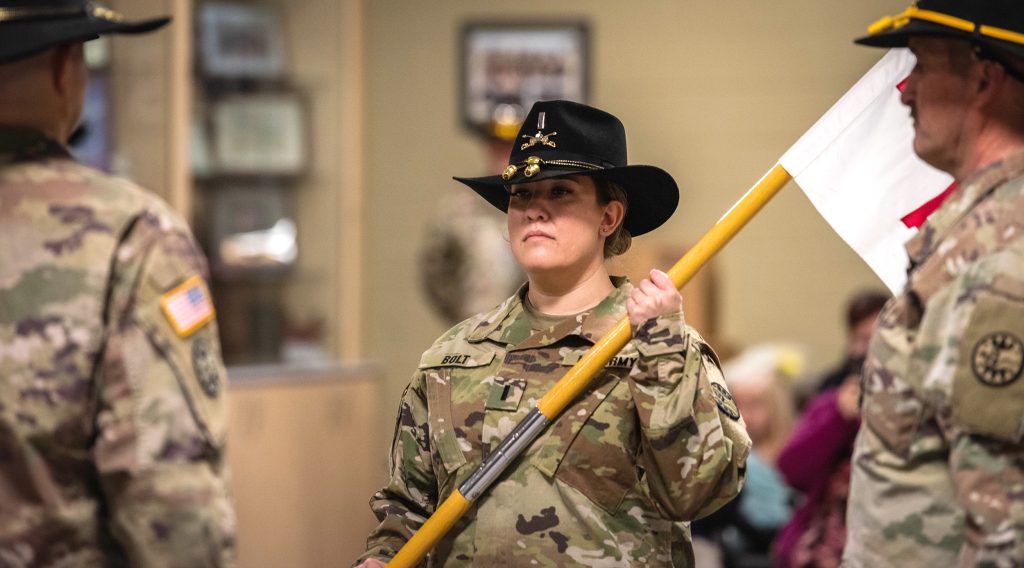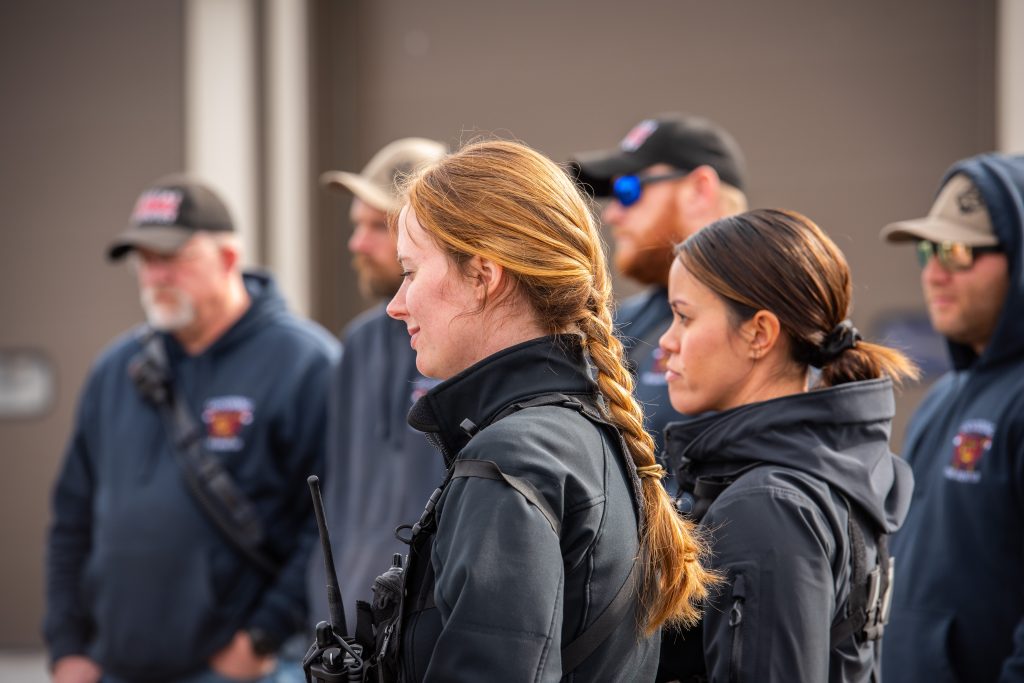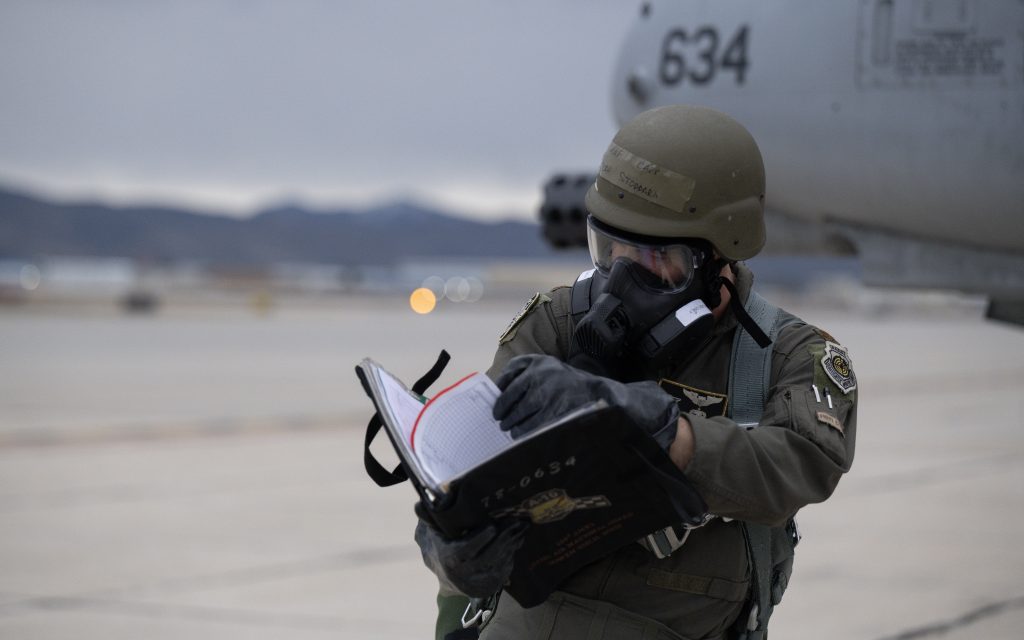Author: m freeman
Bolt assumes command of Alpha Company ‘Animals’

1st Lt. Lauren Bolt became the first female Idaho National Guard Soldier to command a line unit in the 116th Cavalry Brigade Combat Team when she took her post as the commanding officer of Company A, 2-116th Combined Arms Battalion during a Feb. 26 change of command ceremony at the unit’s headquarters in Emmett, Idaho. The 2-116th is headquartered in Caldwell with units in Emmett and Nampa.
“I’m excited to be joining Alpha Company as their new commander,” said Bolt. “For the rest of this year, we have a lot to accomplish. However, I have nothing but trust, faith and confidence in the team that Capt. Edwards and 1st Sgt. Taft Bearden have built.”
Bolt, who has since been promoted to captain, relieved Capt. Arthur Edwards, who has led the unit since August 2020. Bolt enlisted in the Nevada National Guard in 2015 and initially served as a motor transport operator. She was commissioned in May 2017 as an armor officer through the University of Nevada, Las Vegas ROTC program and began her career with the Idaho National Guard as a platoon leader for Company B, 2-116th CAB. In 2019, then 2nd Lt. Bolt made Idaho history when she and fellow 2nd Lt. Brooke Berard graduated from the U.S. Army’s Armor Basic Officer Leaders Course as the state’s first two female armor officers. She has since served as the executive officer of both Company B and Headquarters and Headquarters Company. In Bolt’s most recent post she served as the battalion’s maintenance officer during its deployment in support of Operation Spartan Shield.
“I am confident in her ability to continue the Animal Company’s legacy of mission success.,” said Lt. Col. Barrett Bishop, 2-116th CAB commanding officer. “I was the battalion executive officer when Lauren was a new platoon leader, and she has developed herself well in Army competence and personal tact.”
The Army opened combat arms jobs to female Soldiers in 2015. Over the past decade, Idaho National Guardsmen have transitioned into career fields not previously open to them or reached new heights in their fields while continuing to ensure the organization remains “Always Ready, Always There” to respond to emergencies at home and abroad.
In 2014, Maj. Kimberly Tschepen became the state’s first female Soldier to command a battalion when she took command of the 145th Brigade Support Battalion and Command Sgt. Maj. Linda Burkhart became the state’s first female command sergeant major in 2015.
In 2015, Idaho Guardsman 1st Sgt. Erin Smith became the first female enlisted Soldier in the nation to graduate from M1 Armor Crewman School. Following her, Staff Sgt. Kylene Huerta completed the same course and became the first female Soldier to be assigned to the 116th CBCT as a tank crew member.
In 2017, Sgt. 1st Class Melanie Galletti graduated from the U.S. Army’s Infantryman Course as the Idaho National Guard’s first qualified female enlisted infantry Soldier. That same year, Col. Lora Rainey was appointed as the state’s first female staff judge advocate.
In 2019, 2nd Lt. Jessica Pauley became the state’s first female infantry officer.
Edwards’ departing remarks focused on reminding Company A Soldiers of their accomplishments and the pride he felt as their commander over the past two years.
“From day one, I have been beyond impressed with the professionalism and dedication of Alpha Company Soldiers,” said Edwards. “We have supported local and national callings, all while being part of an all-volunteer force … and I could not be prouder of serving alongside those volunteers.”
Guardsmen train alongside 3 rural Idaho fire departments

The Idaho National Guard’s 101st Weapons of Mass Destruction Civil Support Team trained alongside firefighters from Gooding, Bliss and Hagerman Feb. 2 in Gooding, Idaho. The training was designed to provide a better understanding of how first responders in these small rural Idaho towns can integrate the CST’s assets and expertise with their own to enhance effectiveness in emergency situations where hazardous materials or chemicals may be a key consideration.
Kevin Hungate, a U.S. Department of Energy regional manager for Radiological Assistance Program Team 6, was on site to observe the training as well. He said building relationships with Idaho’s first responders is key to more effective integration if they ever find themselves working together in a real-world scenario in the future.
“Training evolutions like this give us the opportunity to meet these other agencies and build trust,” said Hungate. “These are really good relationship building tools for us.”
The training began with a capabilities brief and tabletop exercise to help familiarize the firefighters with the ways in which the CST can help departments evaluate and contain affected areas, freeing up first responders to focus on more immediate tasks or emerging threats.
The CST Guardsmen then provided a live demonstration of specialized technology and techniques they use to scan and detect potentially harmful chemical agents and radiological sources. The exercise wrapped up with a demonstration of personnel decontamination procedures as they exited a notional “hot zone.”
Gooding Fire Chief Steven Bishop said the training was valuable to him and his firefighters.
“I wasn’t aware of this team at all until they called and talked to us,” said Bishop. “We have limited capabilities in this area, so this is very beneficial to hear about. It’s another resource we can use in certain types of situations that we didn’t have before.”
The 101st WMD CST is capable of providing around-the-clock response and support to requesting first responders and can provide identification of chemical, biological and radiological agents; recommendations for mitigation, medical treatment and follow-on resources; and on-site communications connectivity.
Lt. Col. John McDaniel, commanding officer of the 101st, said the unit’s outreach program is designed to help foster relationships and build on mutual understanding of each agency’s capabilities, limitations and operational demands to enhance their ability to work together effectively in times of crisis.
“Any time we have a chance to work with emergency managers from our neighboring communities, that’s a huge win for us and for the community,” said McDaniel.
Flyers Fueling the Fight: IDANG pilots refuel A-10s during training exercise

A-10 Thunderbolt II pilots from the 190th Fighter Squadron, part of the 124th Fighter Wing, Idaho Air National Guard, participated in a training exercise Feb. 1-2.
The pilots landed at Jocelyn Field, Magic Valley Regional Airport in Twin Falls, turned their own jets, and continued training exercises.
Landing at an airport that military pilots don’t use every day allows them to practice agile combat employment (ACE), which is a proactive and reactive operational scheme of maneuver to increase survivability while generating combat power.
“When thinking within this ACE concept, we may land in a place austere enough that there isn’t support by crew chiefs, especially A-10 trained crew chiefs,” said Col. Ryan Richardson, 124th FW deputy commander, “so pilots need to be familiar with how to service their own aircraft on the turns.”
The training exercise was designed to enhance agility and resilience, preparing for issues that may occur in a combat mission or high-threat environments, said Col. J.R. Williams, 124th Operations Group Commander.
“Specifically, the 124th Fighter Wing is testing command and control capabilities and concepts of operation while generating air power from different locations, all at a moment’s notice,” Williams said.
Although prior coordination with other military units, local airport authorities, and community partners took place, this simulated training mirrors what military aircrews might be faced with in a deployed environment.
“This is a 190th Fighter Squadron focused exercise,” said Richardson, “but we’re getting lots of support from other agencies.”
The IDANG pilots also practiced combat search and rescue with support from the Idaho Army National Guard’s UH-60 Black Hawks out of Gowen Field. Additionally, Navy EA-18G Growlers from Electronic Attack Squadron 135 in Washington integrated into some of the tactical training in the airspace. The A-10s were supported inside of the airspace by the 266th Range Squadron, an IDANG tenant unit located at Mountain Home Air Force Base in Idaho. They provided threat emitters to provide a realistic, contested training scenario.
“The flying training itself is similar to the training that we do daily, but the integration and the simulated war-time scenario of the exercise makes it more complex,” Richardson said.
A C-130 Hercules from the 152nd Airlift Wing, Nevada Air National Guard, also supported the exercise by transporting military members from Gowen Field to Twin Falls. Crew chiefs arrived at the regional airport and served as instructors for the pilots and as safety observers to make sure everything was done correctly.
“We’re proud and excited to be able to operate out of Twin Falls, and we’re grateful for the support of the airport,” said Richardson. “This is fantastic training that’s going to make us more capable in both our federal and our state mission. We are extremely fortunate to be able to get this kind of training in our backyard.”
 Official Government Website
Official Government Website